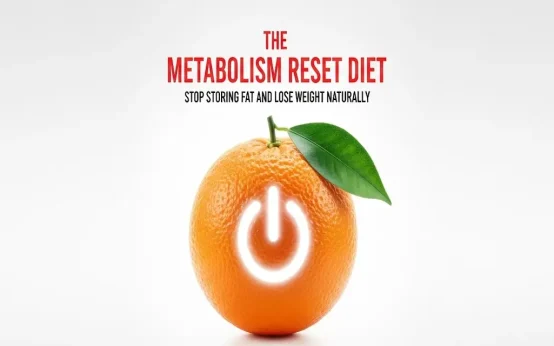As an exercise, running is one of the best ways to lose weight. It’s easy, doesn’t need much gear, and can be done almost anywhere. A lot of people do wonder, though, “How far do I have to run to lose weight?” The truth is that how much running you need to do depends on a lot of things, like your weight, how hard you run, and how often you run.
Understanding Weight Loss
Before getting into specifics like how much you need to run, it’s important to understand how weight loss works in general. A caloric deficit is when your body burns more calories than it takes in. This makes you lose weight. From walking to running, everything you do needs energy, and the calories you eat give you that energy.
Running is a great way to get rid of extra calories. It uses up energy from both carbs and fats because it is an aerobic exercise. When you run, you use more energy, which helps you make a caloric deficit that you need to lose weight. A balanced diet is also very important if you want to see consistent results from running. You need to eat less and burn more calories, but you also need to eat right to keep from getting too tired or losing muscle.
Factors Influencing Weight Loss From Running
How much weight you can lose by running depends on a number of things. Your body weight and composition, how hard you run, how long you run, how often you run, and your running pace or the terrain are the main factors.
Body Weight And Composition:
For every pound you weigh you burn more calories when you run. This is because moving a bigger body takes more energy. A person who weighs 200 pounds will burn more calories than a person who weighs 150 pounds when they run the same distance. Additionally, muscle mass is very important. Since muscle burns more calories than fat people who have more muscle tend to burn more calories even when they’re not doing anything.
Running Intensity
What makes a difference in how many calories you burn is how hard you run. Running at a high intensity like sprinting or interval training burns a lot more calories than running at a moderate or low intensity. This is called the afterburn effect and it happens when you run hard for a short time and then keep your heart rate high for hours afterward.
Duration And Frequency
It is also important how long and how often you run. Increasing the number of times you run or run for longer periods can help you burn more calories. But days off are necessary for muscles to heal so it is important to find a balance that works for you.
Pace And Terrain
You can burn more calories by running on different surfaces like flat ground hills and trails. You can also change your pace. For example it takes more energy to run uphill than it does to run on flat ground. The same is true for sprinting: it burns more calories per minute than running at a steady moderate pace.
Calories Burned Per Mile And Per Hour
Based on your weight and how fast you run you can burn anywhere from 100 to 500 calories per mile or hour. At a moderate pace a person who weighs 155 pounds scorches about 100 calories per mile. At the same speed a person who weighs 185 pounds burns about 120 calories per mile. The exact number will depend on your speed and body type but these averages give you a good idea.
- About 600 calories are burned by a 155-pound person jogging at a speed of 6 miles per hour (10 minutes per mile) for an hour.
- If someone who weighs 185 pounds runs at the same speed, they will burn about 710 calories.
You can get a more accurate estimate of how many calories you burn by using online calculators or apps that take into account things like speed and length of time.
Creating A Running Plan For Weight Loss
A well thought out running plan can help you stick to your weight loss plans. Here are some suggestions for making a good running plan
Starting With A Realistic Goal
To avoid getting hurt or burned out beginners should set small goals that they can reach right away. Three times a week for twenty to thirty minutes could be a good place to start. As your stamina gets better slowly increase the number of times and length of each session.
Duration And Intensity
Beginners can start by running at a steady pace at a moderate level of intensity. As you get better you might want to add interval training which consists of short bursts of fast hard sprints followed by slower runs to recover. With this method you can get fitter and burn more calories in less time.
Sample Running Schedules:
- Beginners: Run for 20-30 minutes three times per week. Instead of speed or distance, you should focus on consistency.
- Intermediate Runners: Aim for 30 to 45 minutes of running four to five times per week, with interval training and longer runs on the weekends.
- For More Experienced Runners: You can run longer distances (45 minutes to an hour) up to six times a week, breaking up your long runs with hill runs and speed work.
Conclusion
How many miles do you need to run to lose weight? The answer is different for everyone because it depends on their weight, how hard they run, and how often they do it. About 100 calories are burned per mile, and if you follow a well-thought-out plan, running three to five times a week can really help you reach your weight loss goals.




 How to Start a Weight Loss Program
How to Start a Weight Loss Program  What Vitamin Deficiency Makes It Hard to Lose Weight?
What Vitamin Deficiency Makes It Hard to Lose Weight?  Improve Fat Burning With a Metabolism Reset Diet
Improve Fat Burning With a Metabolism Reset Diet  How to Avoid Loose Skin When Losing Weight
How to Avoid Loose Skin When Losing Weight  Good Eating Habits for Weight Loss
Good Eating Habits for Weight Loss  A Guide to Weight Loss for Busy People in Today’s Society
A Guide to Weight Loss for Busy People in Today’s Society